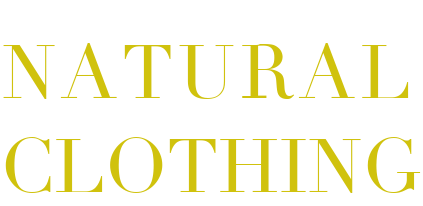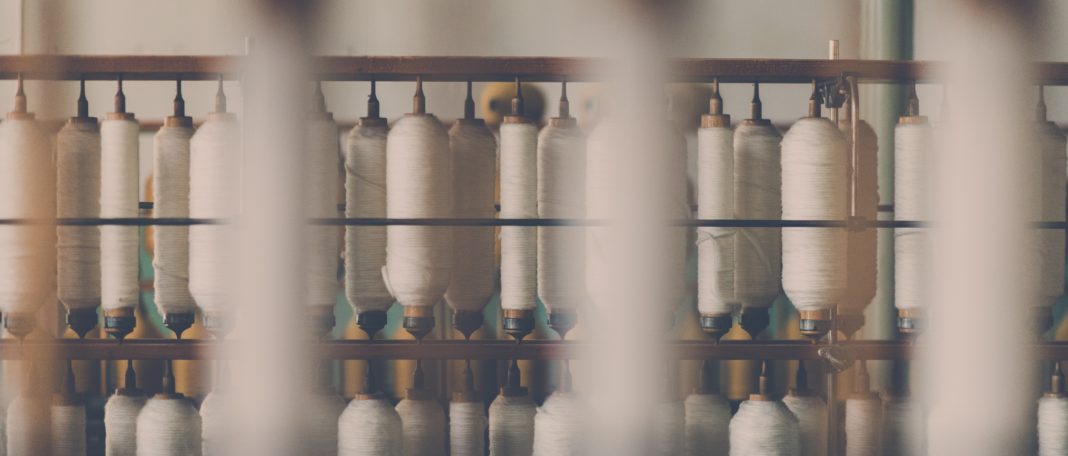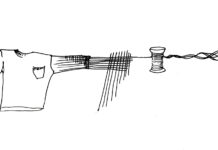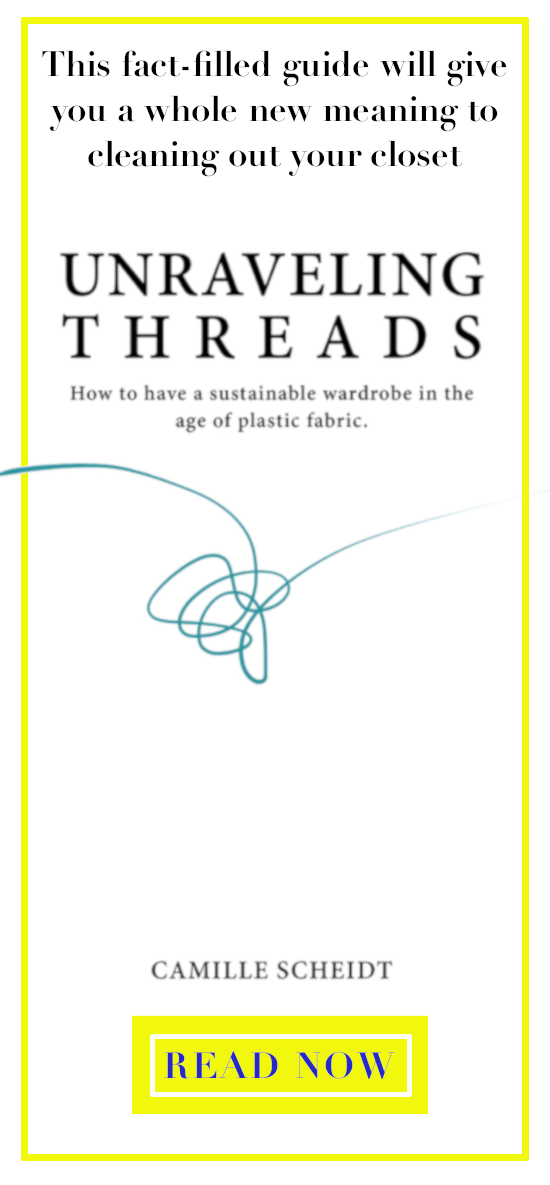Polyamide fabric, also known as nylon fabric, is made of plastic. Polyamide fabric, like polyester fabric, is a manmade polymer. It is manufactured through a chemical process. In short, high amounts of heat and pressure are applied to fossil fuels to yield sheets of polyamide and nylon. Unfortunately, the amounts of heat and pressure (energy) are extremely high and polyamide fabric isn’t the only thing produced from this process.
how is polyamide fabric (nylon fabric) made?
The process begins with carbon-based (organic) chemicals, usually coal or petroleum. In this case, organic means that the substance contains carbon. It isn’t the type of ‘organic’ label you see in the grocery store. You won’t see ‘certified organic’ tags on your polyamide fabric clothes anytime soon.
Heat and pressure are applied to the organic chemical to polymerize two large molecules found within it. These key molecules are adipic acid and hexamethylenediamine. Polymerization is a chemical reaction in which smaller molecules combine to form a larger molecule. The structures of the smaller molecules are still present in the larger, resulting molecule. For example, our adipic acid = A and hexamethylenediamine = H. The chemical process adds these two together (A+H+A+H+A+H) resulting in a polymerized product (AHAHAH). So A+H doesn’t produce K, but AH.
The polymerization of these two molecules produces the nylon in the form of large ribbons or sheets. Then, these ribbons and sheets are shredded down to chips. If the nylon fiber’s final purpose is to become a textile, the chips are melted down and then forced through spinnerets to create fibers. Spinnerets are kind of like noodle makers for plastic polymer solutions. The polymer solution is pushed through holes in the spinneret to form a fiber in the desired form. Different spinnerets create hollow fibers, solid fibers, thinner fibers, etc. Finally, the fibers are spun into threads and knit into the textile known as polyamide fabric.

how much energy does it take to produce nylon fiber?
The production of nylon fiber uses 250 megajoules of energy for every 2.2 pounds (or 1 kilogram) of fiber produced.
A megajoule – that sounds cool! But what does it mean? Let’s put it in perspective.
A joule is a unit of energy and 1 megajoule = 1 million joules. One million joules is the amount of kinetic energy that something weighing 1 megagram (1 tonne/2204.62 lbs) has traveling at 99.4 mph (160 km/h).
So, it would take the energy of 250 elephants each weighing in at 1 tonne and each traveling at 99 mph to create just 2.2 lbs (1 kg) of nylon fiber. Needless to say, that’s a lot of energy and a little yield.
The amount of energy it takes to create nylon fiber is twice as much energy as used to produce polyester fiber (125 MJ/kg) and nearly five times as much energy as used to process cotton fibers (55 MJ/kg). Keep in mind, this is only the amount of energy that goes into creating nylon fiber. The product is not yet to its final nylon fabric form.
what are the properties of nylon fabric & polyamide fabric?
Depending on finishing processes to the textile, polyamide fabric can be very stretchy. Nylon fabric can also have a wide variety in finishes and luster. Depending on processing, nylon can be anywhere from dull to incredibly lustrous (shiny). However, nylon fabric also has a tendency to pill easily, attract surface soil, and create static cling. It also contributes to plastic pollution in waterways. When an article of nylon clothing goes through a laundry cycle, it can release 19,000 plastic microfibers into the water.

what impact does polyamide fabric have on the environment?
Unfortunately, the process to create nylon fabric is not as green as a herd of elephants running at impossible speeds. The manufacturing process releases nitrous oxides into the atmosphere as waste. Nitrous oxide (N2O) is a considerably powerful greenhouse gas and contributes to the depletion of stratospheric ozone. Nitrous oxide has a lifetime of 150 years in our atmosphere and thus accumulates. Gases created during nylon production account for one tenth of the increase of N2O in our atmosphere. Consequently, polyamide fabric production has a high impact on the environment.
The negative effects of polyamide fabric production don’t end there. Exposure to the process of manufacturing nylon offers a host of problems for workers. The dust and fumes created as byproducts can cause irritation of skin, nose and throat, as well as mechanical irritation of the eye.
Additionally, since it is a synthetic fabric, nylon clothing has a tendency to grow odor causing bacteria. Because of this, the wearer may want to wash their nylon clothing more often. Unfortunately, there are some unforeseen environmental dangers lurking in our laundry. Nylon clothing is a contributor to the growing environmental threat of microfibers. Microfibers are tiny pieces of plastic that break off of clothing in the laundry, travel through the sewage lines, and end up in waterways, along shorelines, and spread on agricultural crops. From there, these plastic microfibers can end up in our food, lungs, fish, birds, our stomachs, the whole deal. Learn more about microfibers and simple ways you can act to reduce them here.
how to clean nylon & polyamide clothing
Nylon clothing does not hold up incredibly well through the wash. You should limit how often you wash nylon fabric to increase the garment’s lifespan. Most care tags recommend that you wash nylon clothing on a cold cycle, with gentle detergent, and drip dry. This is because nylon clothing will melt when exposed to high temperatures. Using caustic cleaning products like bleach will also compromise the fiber structure.
So, nylon clothing has a tendency to dirty quickly, but pills when washed often. This makes nylon products have a shorter product life (think of how quickly your tights run, they’re most likely nylon). Because of these properties, nylon clothing will spend a short time in your wardrobe and a much longer time in the landfill. Nylon products take about 30-40 years to decompose.
For some longer lasting, cleaner, and more eco friendly alternatives to polyamide fabric, check out the natural fiber fabrics here.
what is the difference between polyamide fabric, nylon fabric, and polyamide fiber?
If you see ‘polyamide fabric’ on your fabric composition care tag, it’s referring to nylon fabric. Nylon is a generic term for a group of plastics made of synthetic polyamide fibers. You can read about how nylon fabric (polyamide fabric) is made above.
There are, in fact, some polyamide fibers that are not synthetic. The term ‘polyamide fiber’ refers to a fiber made of linear macromolecules with recurring peptide bonds. At least 85% of these bonds join to aliphatic or cycloaliphatic units. For those of us who don’t speak science, the term defines a pretty broad range of fibers, some of which occur naturally. Proteins, including silk and wool, are an example of a naturally occurring polyamide fiber. But again, when polyamide fabric is listed in the fabric composition of a garment, it’s referring to the synthetic fiber that is nylon plastic.
what are some sustainable alternatives to nylon/polyamide?
Depending on the final product, if it’s a slinky dress, a winter hat, or a simple shirt, there are plenty of natural fiber alternatives to nylon. Silk, wool, organic cotton, and lyocell would be fantastic alternatives. Find more alternatives to nylon in our Natural Clothing Directory.














I like the valuable information you provide in your articles. I’ll bookmark your blog and check again here frequently. I am quite sure I’ll learn a lot of new stuff right here! Best of luck for the next!
I am trying to find somethng about the breakdown of the polyamide nylon – I sell vintage clothing and recently purchased some from th e 80’s I believe – very sheer nylon/polyamide/spandex – and they are beautiful but have strange feel – kinda like you have rubbed vaseline on your hads and have a residue remaining. Is there anything that I can do to counteract this problem with these items? Please respond to: [email protected]. Thank you so much, I have searched and cannot find anything to compare it too. These items were made by Warner’s.
Hi Clyde! Thanks for your question. I wish I had better news for you. Though plastics are not biodegradable, they are not stable either. The chemical bonds that hold the plastic together will break over time due to exposure to sunlight, heat, acids, and natural circumstances. Molecules from the chemically bonded polymers that make up the fabric will break away and attach to other compounds they come in contact with. This compromises the integrity of the polymer and therefor the structure of the fiber. As these molecules break away from the polymer, they start a process called reverse polymerization. What’s happening is that the polymer is breaking down back into the bits and pieces that were pushed together to make it. The film or residue you’re seeing may feel similar to petroleum jelly because it may be very similar to petroleum jelly in chemical composition – nylon is after all a product of petroleum (or coal). I’ve been unable to find any research that gives me a good enough answer as to what that film really is, or the best way to clean it.
I have seen similar accounts of plastic breaking down in products like camera grip rubber or vintage toys. In these cases, users recommended either a dish soap or isopropyl alcohol solution to clean the oily residue. I don’t know how this would work on vintage nylon fabric. So as always, I recommend a spot check before you use any method. The breakdown of synthetic fabrics is inevitable, but keeping vintage pieces out of direct sunlight and in mold and mildew free storage with moderate temperature can be helpful to slow it down.
I’ll send this message to you via email as well. Best of luck with the vintage shop!
Hi and thanks beforehand for the useful information on both your article, response to Clyde and hopefully, response to my very own inquiry detailed below.
I was looking into Microfiber towels as I thought they were very practical in terms of the relationship between towel weight / size and how much water they can absorb and how fast they dry. I thought that given how well and fast they dry, that would translate into towels that will last longer clean between washing cycles as they won’t get smelly so fast – and the subsequent
benefits for the environment in water, soap and energy reduction saved from less frequent washing and drying cycles.
However, when reading the label I realized that they are mostly manufactured with a mix of polyester and polyamide fabric – it’s mix percentage varies depending on manufacturer.
I searched polyamide as I had no clue what it was and came across this well written and very useful article.
Now, after the extended introduction – I am truly sorry for that, by the way – I wanted to know if there is any other natural fabric that may yield similar results to the polyester and polyamide mix that you could recommend to us?
Last but not least, and given that I consider myself to be concerned with our planet’s environment, I wonder, after reading your article and realizing all the negatives sides to both fabrics – polyester and polyamide – used in most Microfiber towels, what would be sort of the breaking point – if any – in using such towels in contrast to regular 100 percent cotton towels – that I use regularly – from the environmental impact perspective?
I mean, I learned from your article that manufacturing, washing and disposing of both polyester and polyamide fabrics – that combine in the mentioned Microfiber towels – results in negative impact for the environment as they pollute waterways when washed, require nearly 5 times more energy than cotton fibres, more N2O, longer to decompose, etc, etc, etc.
However, if I use a microfiber towel and wash it significantly less than a regular cotton towel, that too results in benefits for the environment as I would be using less water, energy – not only saved in the washing frequency but also in the fact that Microfiber towels can be air dried eliminating the used of dryer machines – and soap.
I understand that such breaking point – again, if any – will vary depending on how often I wash my current / regular 100 percent cotton towels and how often would I need to wash a potential replacement Microfiber towel.
Let’s assume that I wash a load of cotton towels per week – all the towels used in my household in all bathrooms. The question is, if we were to change to only microfiber towels, how often would we have to wash then to not only offset all the negative environmental impact resulting from using Microfiber towels, but most importantly, to see a positive impact on our carbon foot print and overall environmental pollution? Would it be to wash Microfiber towels every 2 weeks? 3 weeks?
In our case, we’ve learned that we almost always wash towels because they get smelly resulting mostly because they don’t have enough time to completely dry up before used again. We’ve confirmed this because our towels last longer clean and odorless when we use then and take then out of the bathroom and hang then in the clothline outside.
I started to look into such towels and it’s potential benefits as we recently bought a small one and started using it as hand towel in the guest bathroom – where we regularly wash our hand as we enter our house, before and after meals and also before and after urinating – our most used bathroom as we live in a two-story house.
The regular 100 cotton hand towel had to be changed twice a week as it got smelly – more than dirty. We have been using a dark-colored Microfiber hand towel and we can use it for as long as 2 weeks before washing it.
That sparked the idea of whether we should consider changing to Microfiber towels altogether given the potential benefits for the environment. In our case is doesn’t reflect so much in monetary savings as we live in a country where utilities are ridiculously cheap. However, this is not the reality of most countries and if there is in fact a potential breaking point in which Microfiber towels could result in benefits for the environment and in a reduction of household expending, we could be facing a potential win-win escenario that I think it’s worth further analyzing / evaluating, and that’s precisely the reasong why I’ve invested this long in researching about it and now writing to you as I was most impressed with your article and the quality of your response to Clyde.
I believe that you are more qualified and educated on this topic to evaluate this. I also understand that you are not obliged to do so and that you too are time-constraint and trying to keep up with today’s life pace.
Nevertheless, I think it definitely is worth evaluating it as is could potentially result in information that may lead to benefits for our Home – Planet Earth – that desperately needs more allies and friends.
I kindly thank your beforehand for reading my lengthy message and even more so if you so choose to help me to evaluate if there are any benefits to the use of Microfiber Towels for the environment.
Best regards and Thank you one more time.
Hi Simon!
Thank you so much for reading and reaching out. This is a fantastic question and I appreciate the research and experimentation you’ve already put into it.
I suggest you look into Turkish towels made with an organic Turkish cotton. There is quite a bit of diversity in cotton products depending on the species of cotton used, how the fiber is processed, and how the textile is woven. Turkish towels are woven with a flat weave (usually on a loom) rather than woven with small loops like terrycloth. Turkish cotton has a longer fiber length than most types of cotton, is durable, and gets softer with use. The type of cotton and style of weave make this style of towel lightweight, highly absorbent, and fast drying. And as you’ve seen firsthand, when a towel dries faster, it stays cleaner longer. Further, since it’s a natural fiber, you don’t have the environmental issue of plastic microfibers breaking off in the wash.
These towels are also fantastic for traveling – they roll up easily saving space and weight in luggage. Turkish towels are also a great multipurpose item around the house, easily used for the beach or a picnic blanket. They’re also a helpful tool for hand washing clothing: after washing the clothing item, lay it flat on top of the towel and roll the towel up with the clothing inside, then unroll and you’ll see the towel has pulled most of the water from the item without stressing the fabric.
I use them myself because I live in an area with high humidity (averaging 75%). After washing terry cloth towels, they take a day and a half to dry here and by the time they’re dry, the mildew smell is already creeping in. Whereas the Turkish towels dry in just a few hours.
You make a great point in your approach to sustainability. Every household has a number of factors making it unique: climate, habits, location, utilities, etc. There isn’t a one size fits all solution to a ‘sustainable’ household. Everyone needs to determine their own breaking points by analyzing different trade offs to determine the best solution for them. So this in mind, I suggest trying out a Turkish towel and compare it to your terrycloth and microfiber towels.
I would also be curious to throw a Lyocell towel into the experiment, though they can be a little bit harder to find. Otherwise, Lyocell is fast drying and resistant to bacteria. I would use the synthetic microfiber as a last resort, due to both environmental impact of microfibers released in the wash and the fact that synthetics tend to retain bacteria even through laundry cycles. A natural fiber fabric is still first choice here.
I hope this helps! And of course, let me know if you have any follow up questions.
Hi I was just wondering if polyamide contains latex, I have a latex allergy and was going to buy a polyamide backpack, the description says the material used is polyamide, I always thought polyamide was like nylon
Hello Jane,
Thanks for your question. When an allergy is concerned, you should always contact the maker or supplier to confirm the complete list of materials used in the product and whether or not there is any danger of triggering an allergic reaction. Polyamide is nylon, and a 100% polyamide/nylon product shouldn’t contain latex. However, if any pieces of the product are stretchy, they may include rubberized yarns, which may be a problem to those with latex allergies. As with the backpack, the main piece of the bag might be ok, but a drawstring or strap may contain latex. So always check for safety from the source of the product.
Best,
Hello! I loved your auricle on nylon. I always felt like I was wearing a plastic bag when I wore synthetic fiber clothes. Now I have a very important question for your fabric scientists. Within the last 50 years, most natural fiber clothes have been infiltrated with a little bit of spandex. Typically 5 to 10 %. I do not believe it is accidental or coincidental and I do not believe it is better for human health and well being. I am very curious to know the real why behind this. Not the story for stupids. I read several articles about the mattress conspiracy where the. design of the inner springs is to attract and affect the sleeper with radio (microwave) frequencies. Please, do you know, or can you uncover why spandex has infiltrated our clothing and fabrics? Thank you. I wonder about this every time I see a product I like, but won’t buy, once I see the fabric label.